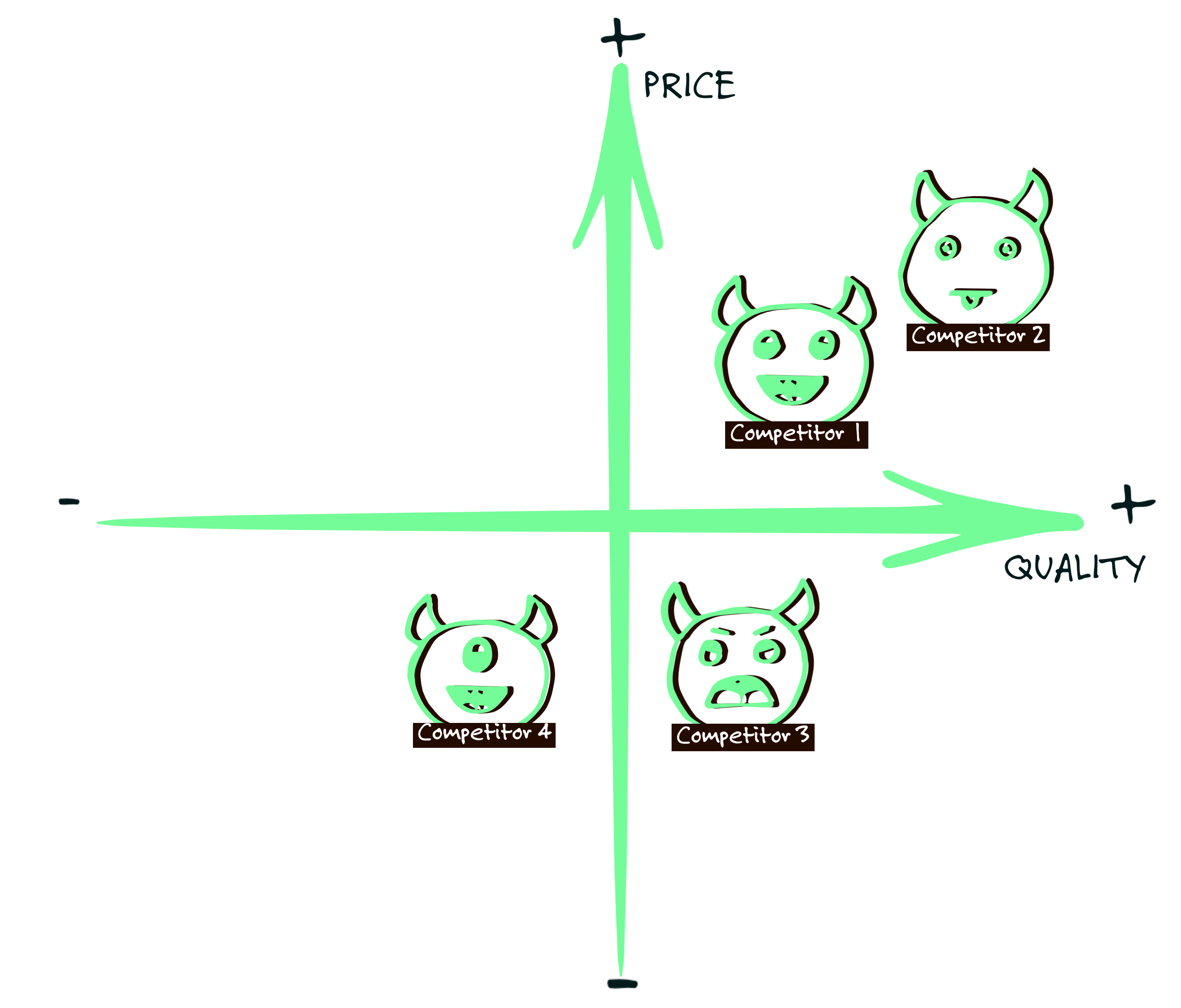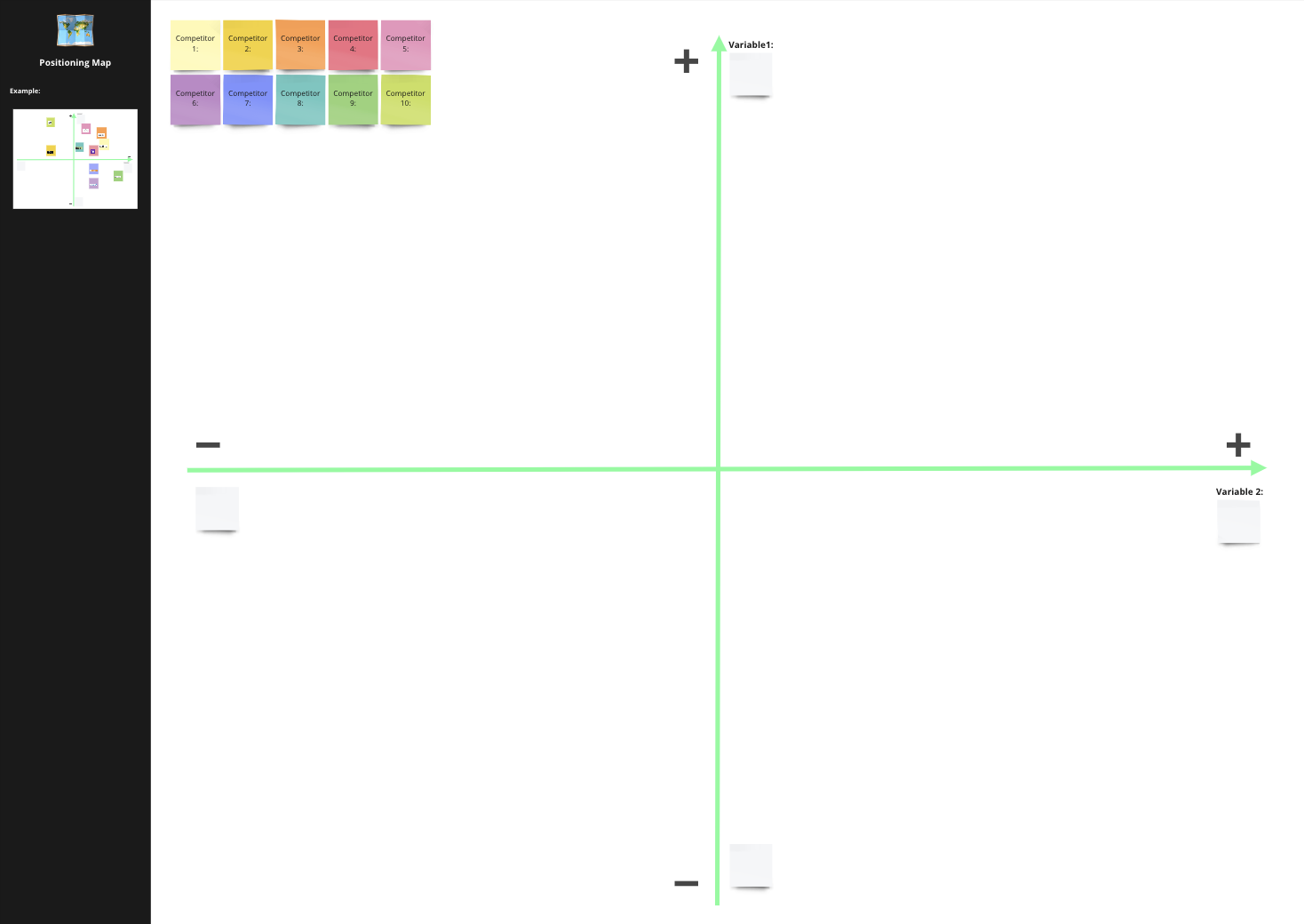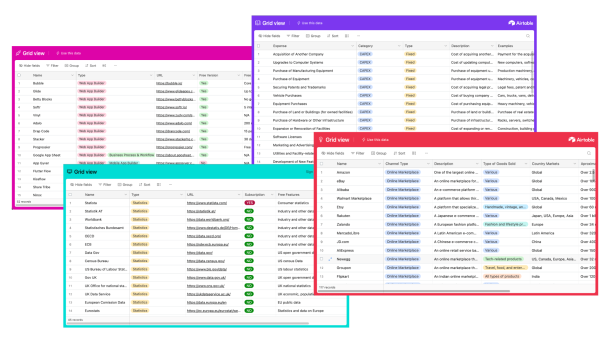Competitor Analysis Guide
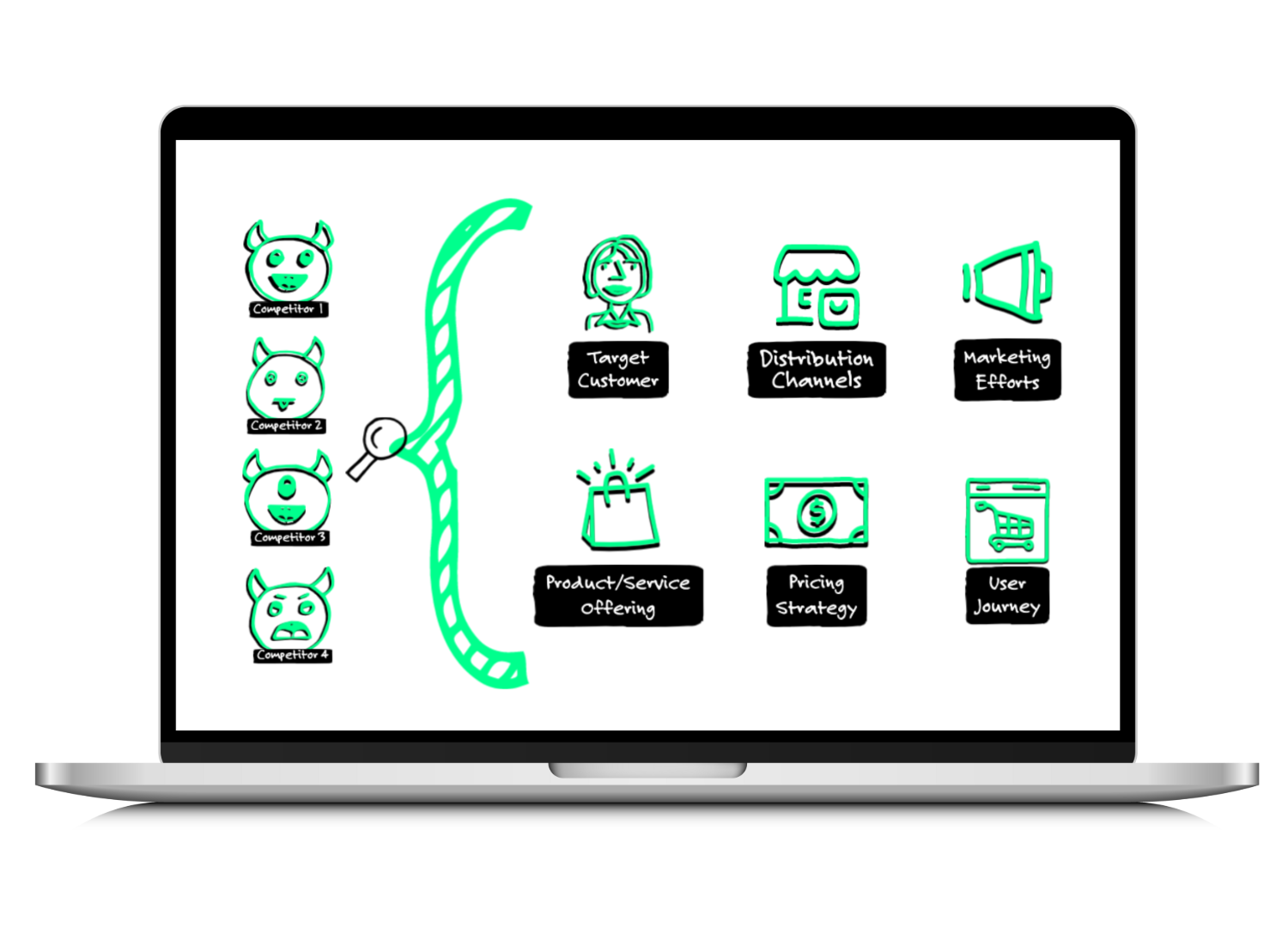
What is a Competitor Analysis?
In this toolkit we will focus on your competitors and analyze them in detail. In the following chapters we will dive into a detailed competitor benchmark to understand:
- Their target customers
- Their product/service offering
- Their pricing strategy
- Their distribution channels
- Their marketing strategy
- Their user journey
- And finally, paint a clear positioning map showing your competitive landscape
A competitor analysis will help you answer strategic questions for your business and probably detect uncovered niches for your own positioning. It can provide, for example, new insights for:
-
- Detecting additional customer target segments that are underserved
- Designing your product/service offering and defining a USP that is not covered yet
- Defining your own pricing model and deciding on the right price point
- Deciding on the sales & marketing channel you should use to be competitive and get a benchmark for their performance
- Determining an appropriate marketing strategy by looking at what worked for others
- Designing and improving your own customer journey
Note: 🍋 Throughout this toolkit we will use the example of a food supplement company to better illustrate each task and information.
What is a Competitor Analysis Good For?
Competitor analysis is a crucial tool for any business as it provides a strategic roadmap to navigate the competitive landscape. By understanding competitors, you can:
- Identify Underserved Customer Segments: Uncover additional target segments that may be underserved by competitors.
- Define Unique Selling Proposition (USP): Design a product or service offering with a USP that stands out in the market.
- Optimize Pricing Models: Determine the right pricing model and competitive price points.
- Strategize Marketing Channels: Choose effective sales and marketing channels based on competitors’ performance.
- Enhance User Journey: Design and improve the customer journey based on successful competitor practices.
- Strategic Positioning: Develop a clear positioning map to visualize the competitive landscape and identify market gaps.
Curated Lists 📋
💡 To save you some time, we have prepared a free list with Company Information Sources and a free Marketing Channel Glossary with which you can use for your Competitor Analysis
How to Conduct a Competitor Analysis Step-by-Step:
Step A: Competitor Analysis Template
Step B: Competitor Selection
Step C: Competitors' Target Customers
Step D: Competitors' Product/Service Offering
Step E: Competitors' Pricing Strategy
Step F: Competitors' Distribution Channels
Step G: Competitors' Marketing Efforts
Step H: Competitors' User Journey
Step I: Positioning Map
Step A
Competitor Analysis Template
To work on your competitor analysis you can either build your own whiteboard template for example on Miro or you can use our ready-to-use template along with this guide.
Included Templates:

Competitor Analysis Miro Board
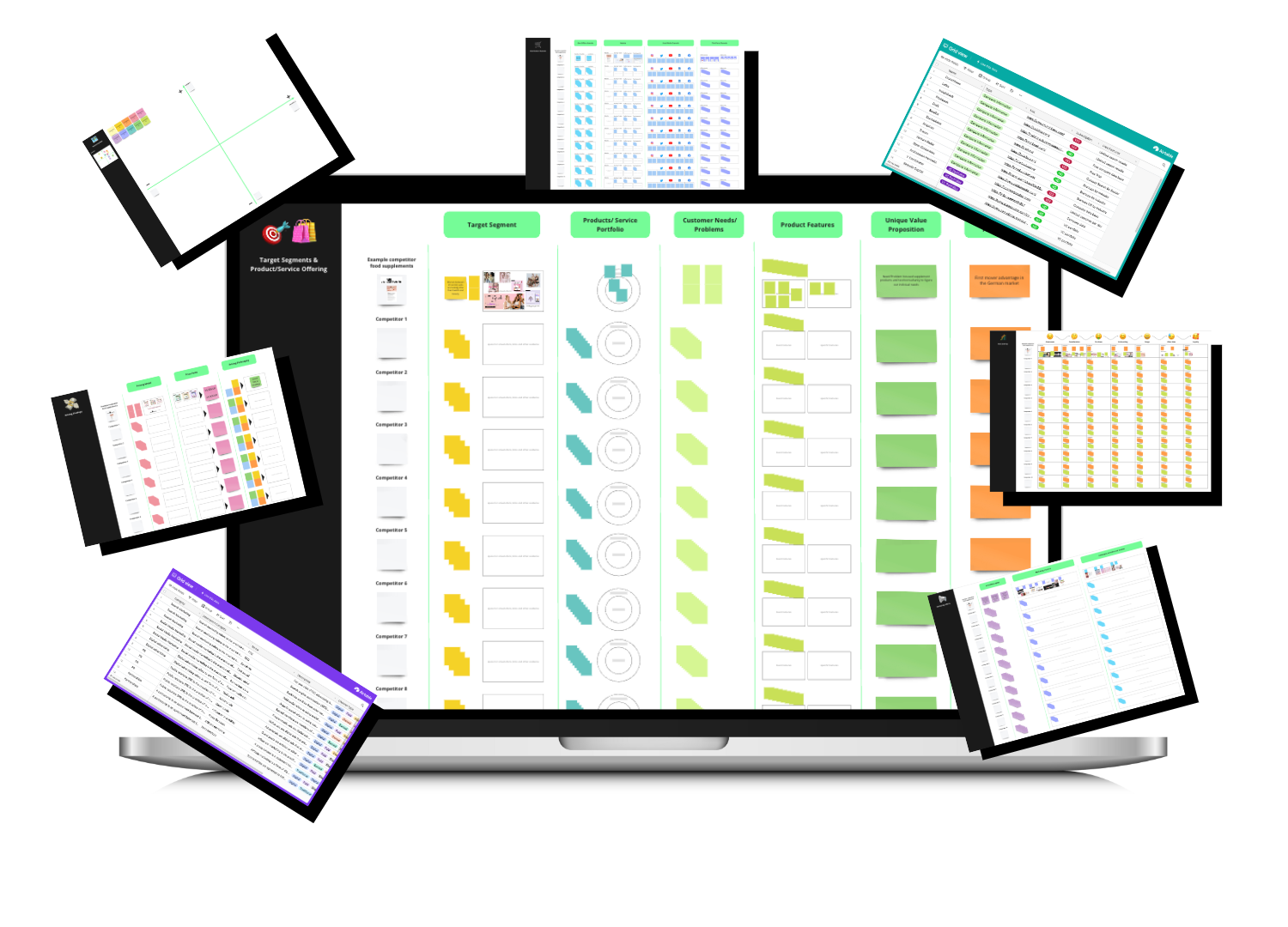
Step B
Competitor Selection

If you didn’t do this yet go ahead and select your most relevant competitors. Ideally, you will have around five competitors, and no more than ten competitors that you will analyze in depth.
To do so think about who you are competing within your customer segments. You can take into consideration both, direct competitors, meaning businesses within the same market which sell products/services that are very similar to yours, or indirect competitors that are offering products that are not exactly the same as yours but serve the same need and could work as an alternative. Depending on the level of innovation you might even be a first mover in your area and don’t have any direct competition yet.
At this stage you want to consider only those who really serve the same markets as you would. Meaning, if you for example only want to target the German market, a company (competitor) that operates in Asia would not be relevant in this case.
So, as a first step, select those companies that you would compete with in your market and list them in the first section of your competitor analysis template 📒. Ideally, you will have around five competitors, and no more than ten competitors that you will analyze in depth.
💡 To find further competitors you can use the following methods or the resources from our Competitor Information Sources List:
-
Company/startup databases including national company directories
-
VC portfolios
-
Keyword/website analysis tools by checking the sites that compete for certain keywords
-
and of course good ol’ Google search
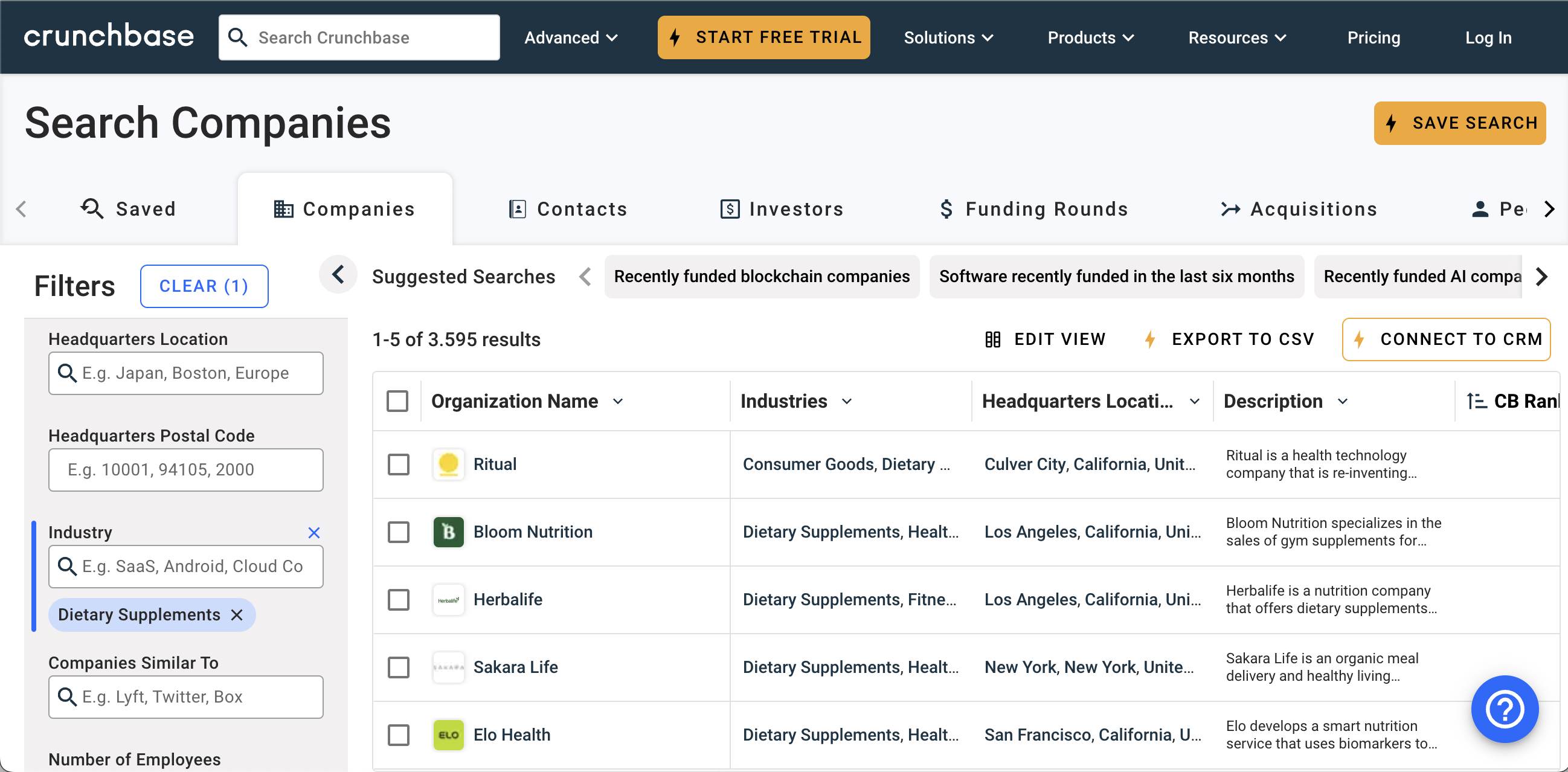
Step C
Competitors’ Target Customers

The next step is to determine your competitors’ target segment. Your competitors obviously won’t tell you “hey we are targeting women between 25 and 50” or “we are targeting small and medium businesses in the travel sector”, but you can make educated guesses by looking at their website and social media channels.
Here are a few methods that can help you figure out their target customers:
- Niche products: Sometimes it’s quite obvious that a company targets a specific niche by looking at the products they sell. For example, a company selling baby products is obviously targeting new parents.
- References: Companies targeting B2B clients sometimes list important clients in their references on their website.
- Branding look and feel: Study their branding, the colors, the fonts, and the images they are using. Who would this “look and feel” appeal to? Is it more modern and appealing to younger people or more classic and appealing to older, more traditional generations?
- Image material: Look at the images they are using on their website or social media channel. Are any people shown? If so, what type of people are they? These are usually also the company’s target customers.
- Social media followers: Look at who is following and interacting with the brand on their social media channels.
- Customer reviews: You can also see who their real customers are by looking at the people who wrote customer reviews.
Again, this is not an exact science, so try to describe your competitor’s target customers on a high level, just as you did for your business in the market environment analysis.
☝️ Use the first section of the Competitor Analysis Template 📒 to note down your findings.
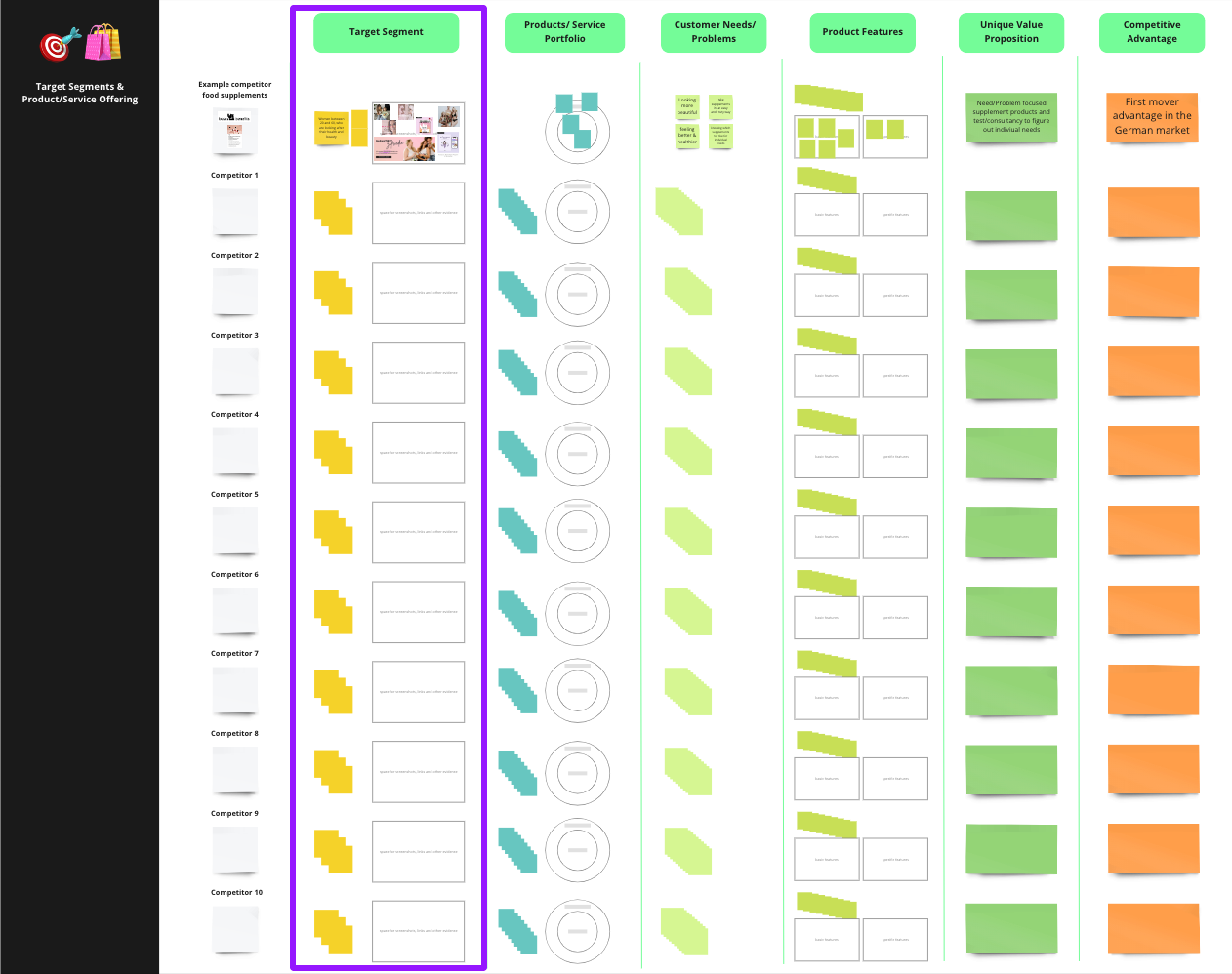
Step D
Competitors’ Product/ Service Offering

Next dive into the competitor’s offerings. Again, look at their website, other sales channels (e.g. marketplaces) and social media to find out what products/services they offer, how they describe them and which general claims and messages they communicate to their audience. You want to find out:
- What do they offer within their product or service portfolio? Are they offering a single product/service or a range? If yes, how many and do they have different product/service categories? Do they augment their core product with any additional services/products?
- Which customer needs or problems does the competitor intend to solve with its products? Therefore, look at the marketing messages or even their vision and mission statement. For example, for a shampoo brand that claims “use our shampoo to reduce hair loss in just 4 weeks,” it is clear the problem they are solving with their product is hair loss.
- What are the most important product features? How do the product features compare to other competitors? Are there basic features that all or most competitors offer and are there great features that individual competitors offer that improve the customer experience?
- What is their unique selling proposition? What is the competitor’s differential factor that sets them apart from other brands? What are they doing especially well?
- What is their real competitive advantage? Meaning, what are they doing better or where do they have an unfair advantage over other competitors?
☝️ Again, use the corresponding fields in the first section of the Competitor Analysis 📒Template to note down your findings.
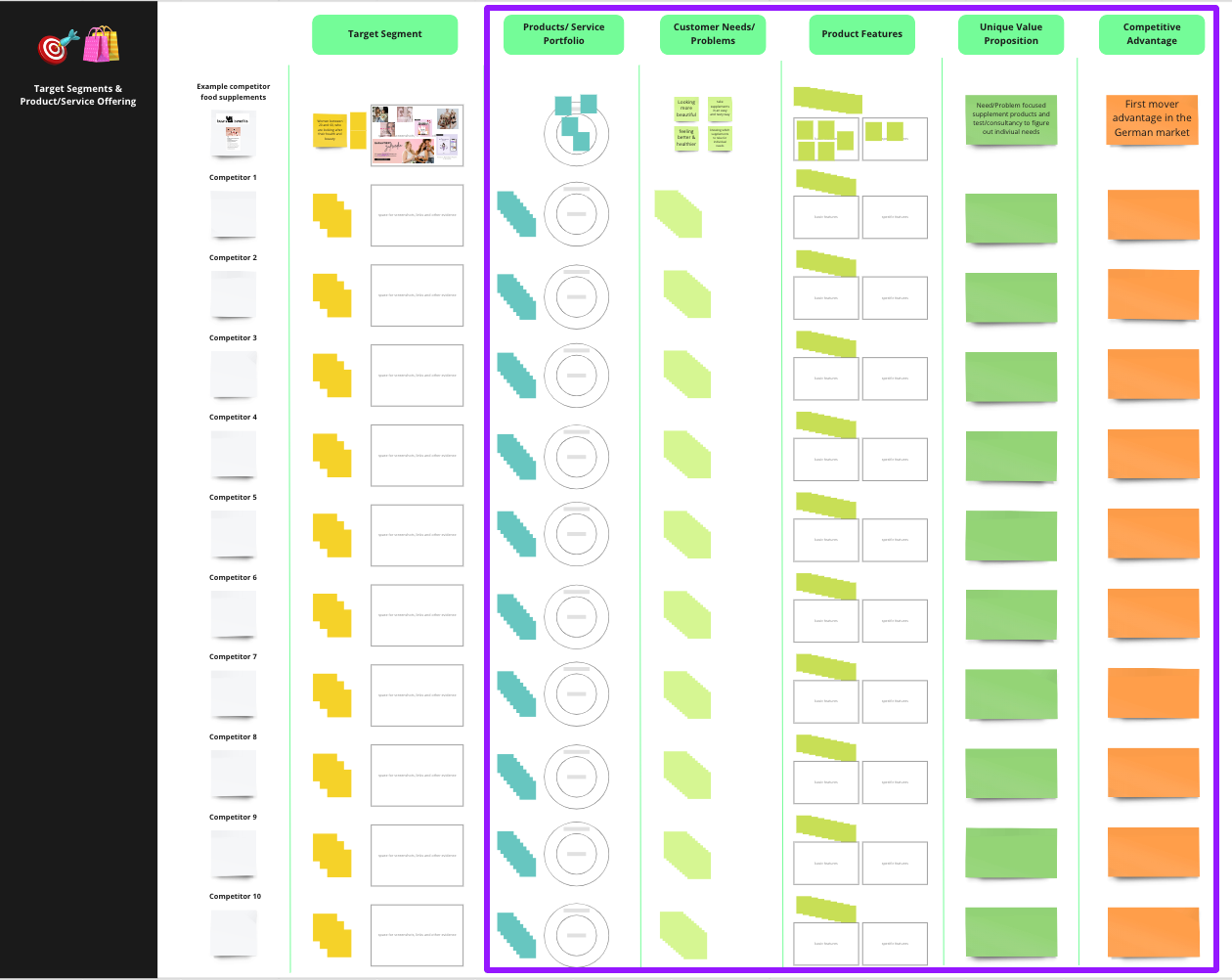
Step E
Competitors’ Pricing Strategy

One of the most important elements when it comes to defining your positioning and an element that heavily impacts the demand for your product, is the price. In order to set your own prices, you want to know how much your competitors charge for their products/services.
Which is why we will now analyze the different elements of your competitors pricing strategy.
Pricing Models
Understand your competitors’ pricing model(s): Identify which pricing model(s) your competitors are using. Maybe they are even using different ones. Try to identify them all:
- Per unit pricing: This is the most basic pricing model, the business charges a price per unit. For example a fashion retailer that charges a certain price for each piece of clothes.
- Bundle pricing: This is if a company bundles several products/services together in a set and charges a price for the whole bundle of products. Cosmetic brands for example frequently use this model, bundling different beauty products together in a set and offering it at a slightly lower price compared to when purchasing the products individually.
- Flat subscription model: This is if a company charges for its products/services to access them during a certain period of time (weekly, monthly, annually). Gyms for example usually charge you to access their facilities and use their services on a monthly or annual basis.
- Tiered subscription model: The principle is the same as for the flat subscription model but the companies offer different levels of subscriptions (e.g. basic, premium) that come with more service/products features. SaaS businesses for example often use this type of pricing model.
- Freemium-model: That is if a company offers a very limited version of their product/service for free and the customer will have to pay for a complete version with more features. This again is a model often used by SaaS companies offering a limited version for free.
- Dynamic pricing: This is if a company adapts their prices dynamically depending on the demand. This is a typical pricing model that airlines often use, the higher the demand for a certain flight the more expensive the tickets get.
- VIP discount models: This is if a company offers special prices to customers who subscribe to their “club”. Ikea for example offers better prices on some products for Ikea Family members and Amazon does the same for Prime customers.
- Pay what you like model: In this model the company doesn’t set a price but the customer decides himself what s/he wants and can give. This model is not very common, but it can sometimes be found for yoga classes for example.
- Always on discounts: This is if companies always offer some kind of discount, for example for purchases for a certain amount of money or through a certain channel, for the first order or if they just always have their products seemingly discounted to give the impression that the customer is getting a bargain. Young D2C brands often use this model to catch first time customers.
Price Point
Analyze your competitor’s price point: Understand the range in which your competitors price their products. There are price analysis tools available that you can use, but for this purpose, a manual analysis should be sufficient. Therefore, go to the competitor’s website or other third-party online marketplace where the competitor sells their products/services (e.g. Amazon) and check their prices. Depending on whether you are looking at a single product/service or a portfolio of products/services, the price point can be reflected in a single price or a price range.
In order for the price analysis to make sense, you want the products/services of course to be comparable:
- If the competitors are offering a wide range of products/services in the same category e.g. different food supplements, pick a number of products that are common or most similar for the different competitors and compare their prices.
- If competitors are offering different product levels, for example a basic, medium and professional level, which is very common for SaaS products, pick one for example the basic level service and compare the prices of those.
- If competitors are offering different numbers of product/service units, bring them down to the same unit. For example one competitor offers an annual SaaS subscription the other a monthly subscription, use always the price for one month. Or one competitor offers his products in single units the other only in bundles of 10 units, use alway the price for one unit.
Pricing Philosophy
Finally, based on your previous analysis you can now determine your competitors’ pricing philosophy.
On a higher level there are four price positioning philosophies: the premium strategy, the good-value strategy, the economy strategy and overcharging strategy, whereas this last one is not a sustainable one, since customers will stop buying the product if they feel they are paying too much money for the product/service. Go ahead and note down the pricing philosophy each of your competitors’ is following.
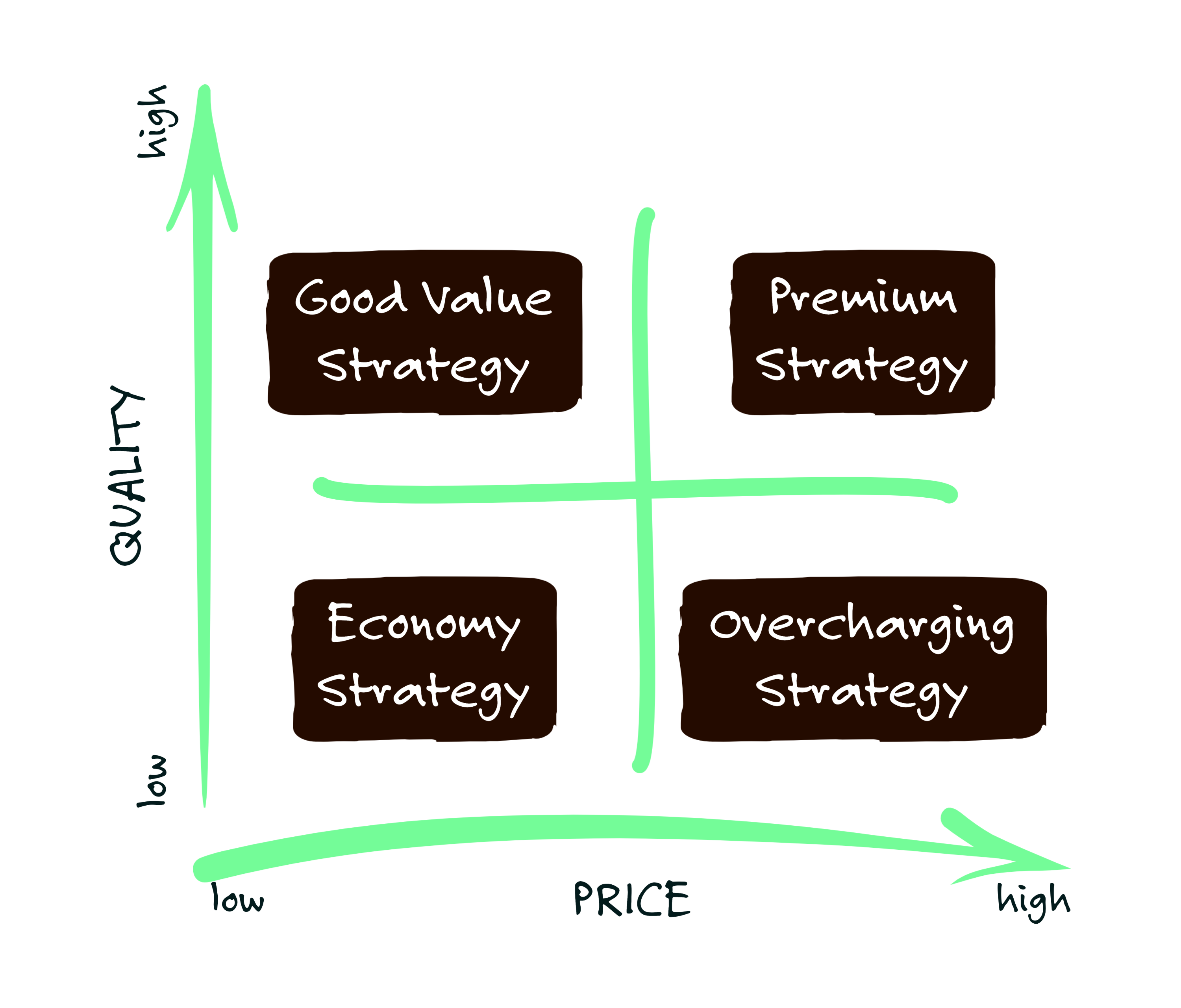
☝️ Use the corresponding fields in the second section of the Competitor Analysis 📒Template to note down your findings. And finally draw your conclusion on your competitors pricing strategy.
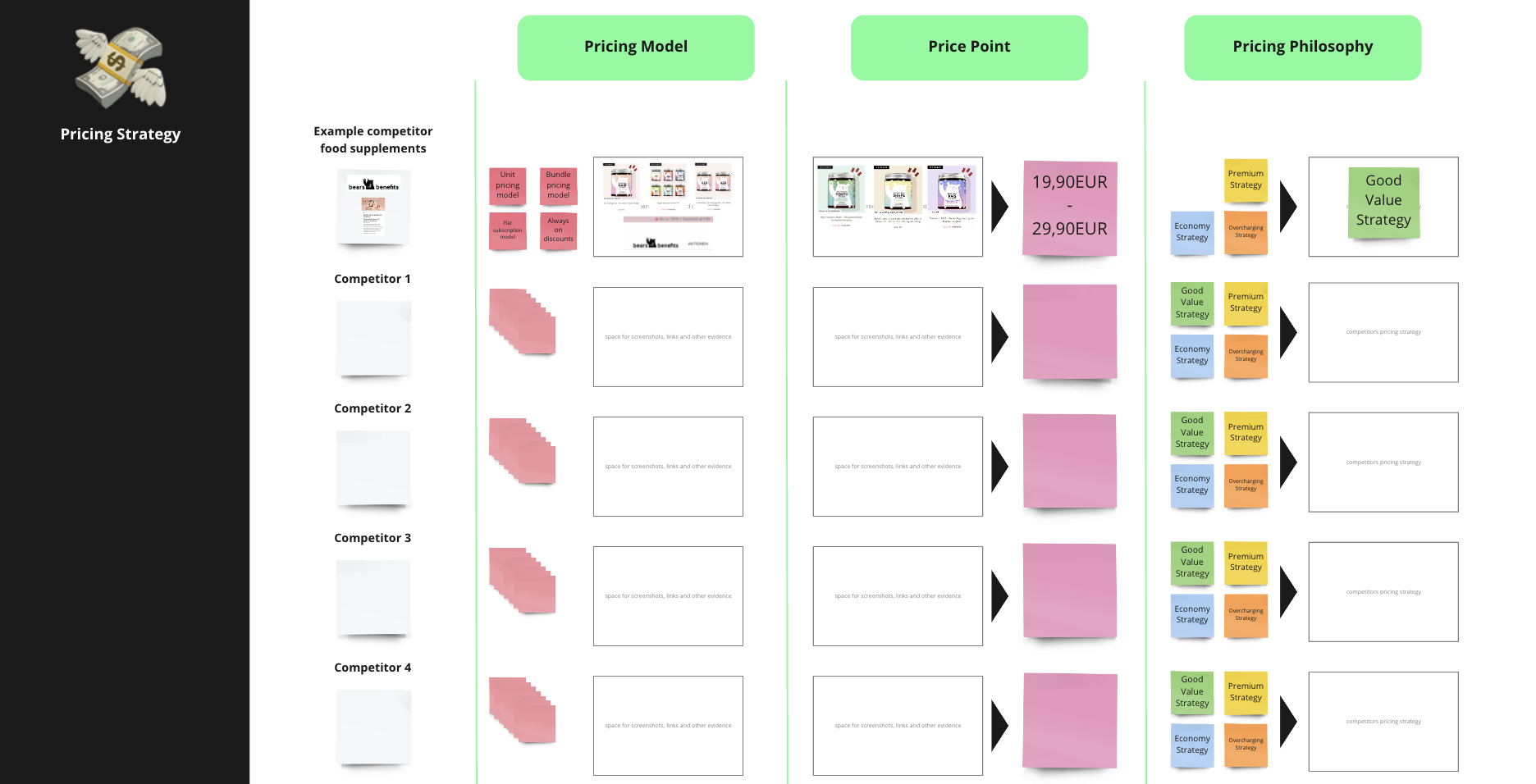
Step F
Competitors’ Distribution Channels

The next step is to understand the competitors’ distribution channels, meaning where they distribute and market their products. You want to determine if they are a D2C (direct to consumer) brand or if they sell through third party retailers. Understand if they sell only online or have offline outlets. If they use social media channels to interact with their consumers. And how they perform in those channels.
We will take a look at the types of channels one by one:
Own Channels
Those are all the channels that are owned by the brand itself.
Offline Channels: Does your competitor have any own offline outlets? This might be retail stores, hotels, gyms, beauty salons and so on. Basically any outlet through which a company delivers its products and brand experience offline. If so, try to understand your competitors’ coverage, where, at which locations and how many outlets your competitor has.
Website/Online Store: Does your competitor have a website or online shop? If yes, use the website & keyword analysis tools like similarweb, semrush or ubersuggest to check their performance. You will find more tool on the market trend analysis list from day 1, here is again the link to the 📋List.
- Traffic: How much monthly traffic do they have on average? (use e.g. similarweb)
- Traffic sources: Where does this traffic come from? Search engines, direct traffic, social, display ads, referral or email?
- Keywords: What are the top keywords their website rank for?
Social Media: Are your competitors present on the major social media channels like Instagram, Twitter, LinkedIn, Facebook or YouTube? If yes, on which ones? You can usually easily find that out by looking at the website, most brands refer to their social media channels somewhere in the header or footer, or well search for the brand on each of those social media channels. Once you found them, check their performance on those channels:
- Followers: How many followers do they have on each channel?
- Activity: How many posts/tweets/videos etc. have they published?
Third Party Channels
Do your competitors sell their products or services through third party channels like:
- Online Marketplaces, Online Retailers etc.
- Offline Retailer and Partners (whereas some of them probably also have an online shop)
You can usually find this quite easy by A. looking at their website. Usually, companies mention somewhere on their website if their products/services are available at any third party distribution channels. And B. searching Google for a product/service of this brand and see which third party retailers or marketplaces come up in the general search results and under Google shopping.
☝️ Use the corresponding area in the third section of the Competitor Analysis 📒Template to note down your findings.
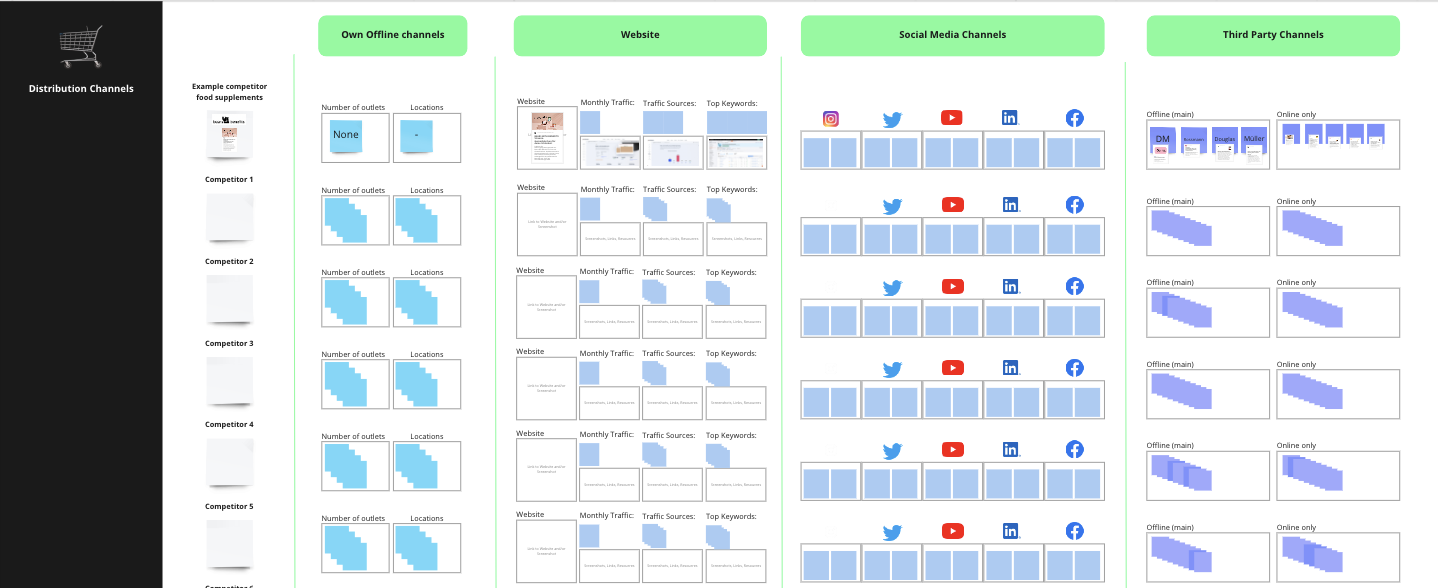
Step G
Competitors’ Marketing Efforts

Now let’s look into your competitors’ marketing efforts. Which message(s) do they communicate and transmit to their target audience? Which marketing channels do they use? Which campaigns and marketing activities are they running that call your attention?
Brand Message
In a first step try to understand your competitors’ brand message. The brand message is the overall message that a brand is trying to convey to its target audience through its marketing efforts. This message is typically based on the brand’s goals, values, and positioning within the market, and is designed to engage and resonate with the target audience.
The brand message is an important element of a brand’s marketing strategy, as it helps to differentiate the brand from its competitors and establish its positioning within the market. It also helps to build trust and credibility with the target audience, and ultimately drive sales and growth for the brand.
In order to understand your competitor’s messaging, you can start by analyzing their brand’s marketing materials, including their website, advertisements, and social media posts. This will give you an insight into the language, tone, and themes that the brand is using in its marketing efforts.
Use the research you did before on the brand’s target market to get a better understanding of its goals and values. This can help you determine what the brand is trying to accomplish with its marketing, and what message it is trying to convey to its target audience.
Another way to figure out a brand’s main marketing message is to look at how the brand presents itself to the public. This can include things like its mission statement, company values, and any public statements or interviews with the brand’s leadership.
Marketing Media Channels
Next, try to figure out which marketing channels your competitors are using. Marketing media channels refer to the various ways in which a business or organization can deliver marketing messages to its target audience in order to promote a brand, increase sales, and build customer loyalty. The goal is to reach as many potential customers as possible and to effectively communicate the benefits of a product or service to their specific target audience.
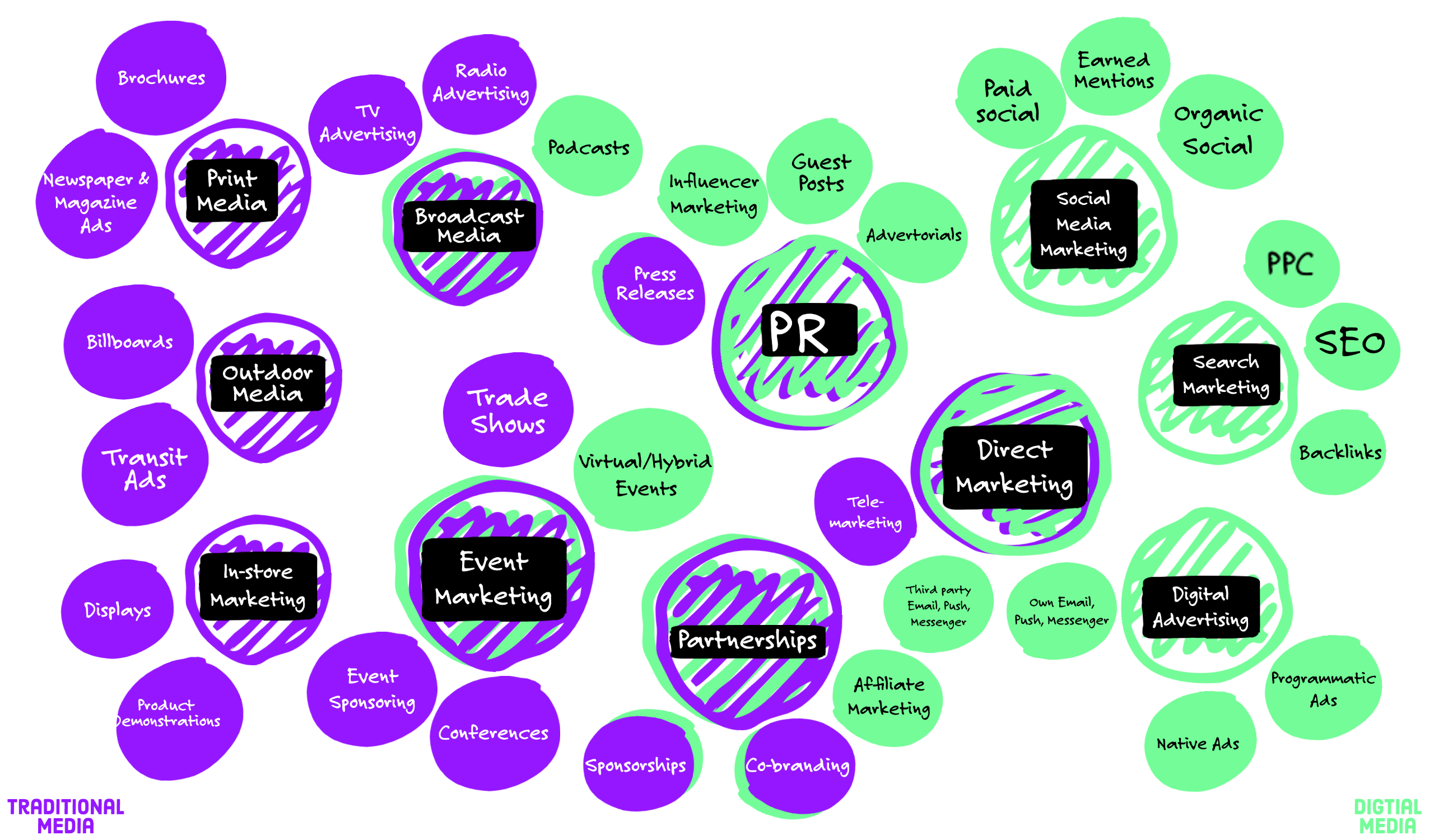
💡 There is a large variety of both, traditional and digital marketing channels. We prepared an overview of all major marketing channels on the Marketing Channel Glossary List above.
You may remember having seen your competitor’s advertising on traditional channels like in-store advertising, billboards, TV ads etc. If yes, awesome, go ahead and note them down.
If not that’s totally fine, focus on the digital marketing channels that you can analyze.
- Google for your competitors brand and products and see if any sponsored product or search results come up.
- Look at their website and social media channels for any hints.
- Check if they have an email newsletter you can sign up for?
- Check if they are collaborating with any influencers?
- Do they refer to any PR articles in news media on their website?
- Do they have an app you can download and receive push message?
- If you have been googling them or visiting their website you will probably now also get targeted with their ads on social media, the google search page or third party sites.
There are various ways to figure out which types of marketing channels your competitors are using even from your computer.
Campaigns, activities and content
Finally, have a look at their marketing campaigns, activities and content. A marketing campaign is a coordinated series of marketing activities that are designed to achieve a specific objective, such as increasing sales or raising awareness of a particular product or service. A marketing activity, on the other hand, is a single action or a group of related actions that are taken to achieve a specific goal. Marketing contents, meanwhile, refer to the materials or assets that are used in marketing activities. Marketing content is typically created with a specific target audience in mind, and is designed to appeal to the interests and needs of that audience.
You want to understand which messages and content your competitors are using to catch the awareness of their target audience. Are there any campaigns, marketing activities, materials or messages that you find especially creative or inspiring?
☝️ Go ahead and note down all your findings on your competitors brand messages, marketing channels and activities in the corresponding area of your Competitor Analysis 📒Template.
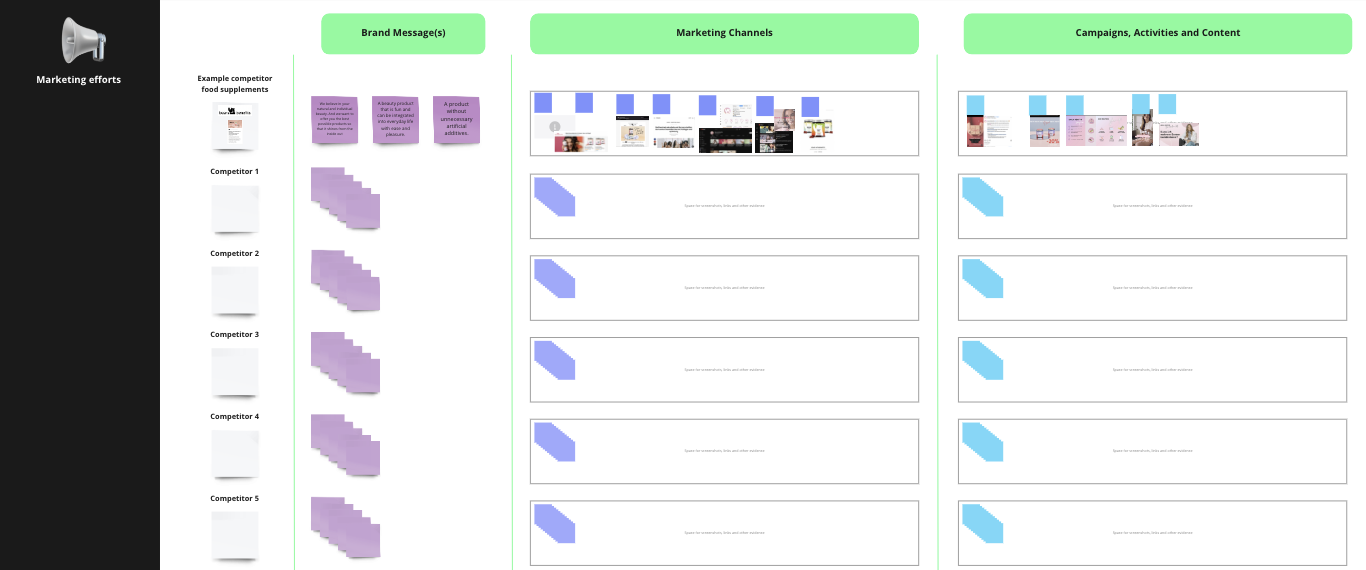
Step H
Competitors’ User Journey

You also want to get a high-level picture of your competitors’ user journey to understand where and how they interact with their customers and what customer experience they provide. Through this, you will be able to identify noteworthy customer experience elements and best practices for your own user journey. The user journey essentially describes the process that a user goes through when interacting with a product or service, and how and through which touchpoints a company interacts with the clients in every step. Ultimately, the goal of a user journey is to create a positive and seamless experience for the user.
Typical steps include:
- Awareness: Where and how do potential customers get aware of your competitors’ products/services? How do your competitors get potential customers to click on their website or visit whatever distribution channel they are offering? Do they find them on Google, do they see an ad on Instagram or an influencer using the product on Youtube?
- Consideration: Once your competitors get a potential customer to view their offer, how do they create further interest and desire for their products/services and finally convince them to purchase it? Do they for example offer product trials, live or video demonstrations or get clients on a personal call to elaborate on their offering?
- Purchase: How does the purchasing process look like? Which touchpoints and steps does the customer have to complete to receive the service/product?
- On-boarding: Does the competitor have any on-boarding process to familiarize the customer with the product/service and prepare him for usage?
- Usage: How could the customer experience look like during product/service usage? What do your competitors do to facilitate usage and make it as easy and comfortable as possible?
- After-sale: What after sales services do your competitors offer? How do they handle customer claims and questions? Through which channels do they offer customer service?
- Loyalty: What do your competitors do to retain customers and encourage repeat purchase? Do they offer any rewards or incentives for repeat customers? Do they keep in touch with their customers via a personalized newsletter?
☝️ Analyze those steps for each of your competitors. Which touchpoints can you identify in each of those steps? Where do you see best practices in terms of customer experience elements and interactions? Note them down in the fifth section of your Competitor Analysis 📒Template.
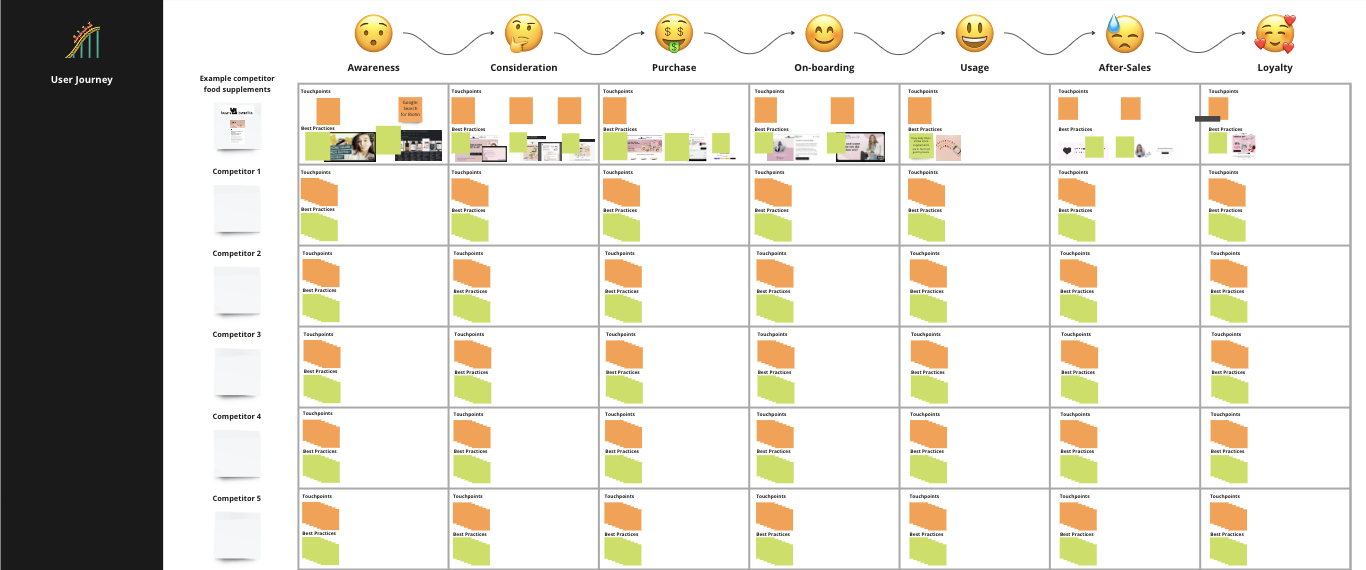
Step I
Positioning Map

Last but not least, with all the information you have gathered on your competitors, you should now be able to create a positioning map.
A positioning map displays how a company’s product or brand is perceived in comparison to its competitors. It will help you visualize the competitive environment and identify potential opportunities to position your product or service in a unique way that sets it apart from your competitors.
A positioning map uses two variables on the axes. The first variable is typically a measure of the product or brand’s perceived quality or value. The second variable is typically a measure of the product or brand’s perceived price or cost. However, you can use any two variables that seem most relevant to you. They could also be product/service features, product/service benefits and so on.
Once you have defined your variables, go ahead and place your competitors according to their relative performance in those variables along the two axes.
☝️ Use the corresponding section of your Competitor Analysis 📒Template. With the finished positioning map you should now be able to easily detect potential market gaps to place your own products/services.
